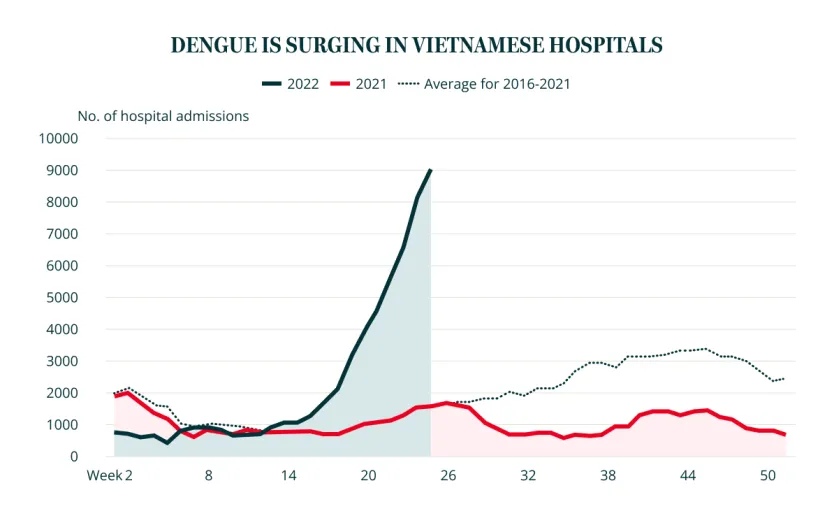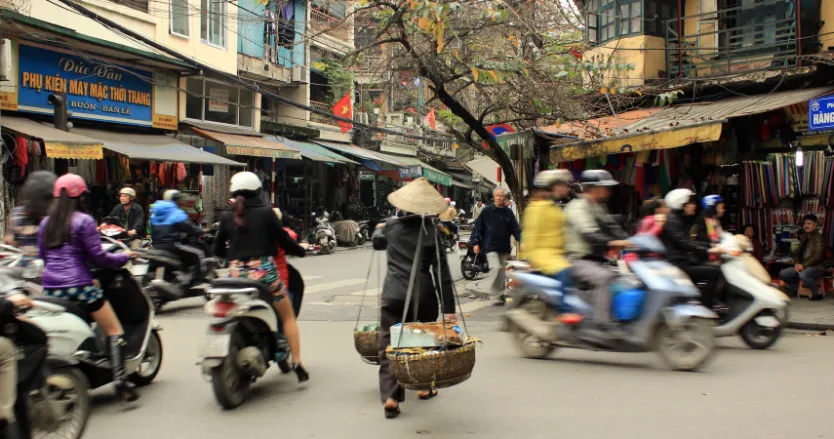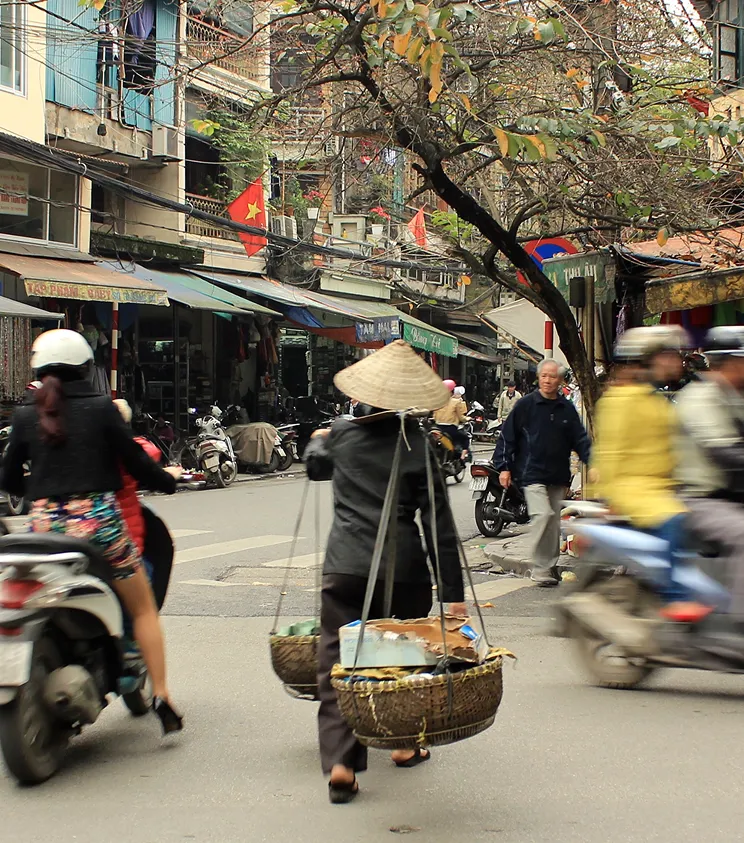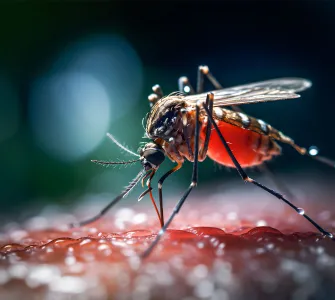Dengue outbreaks in Vietnam’s changing landscape

Dengue is a major public health concern in Vietnam, which has one of the highest incidences of this disease in Southeast Asia.1 In recent decades, Vietnam has transformed remarkably as it has undergone rapid urban development and experienced a sharp rise in population mobility – including increased air travel.1 At the same time, the country has faced warming temperatures and more frequent extreme weather events such as heatwaves and droughts.1
In many ways, with factors such as increasing urbanization and tourism, as well as climate change, Vietnam serves as a snapshot of changing world conditions that favour the spread of dengue.2 This article looks back at a large dengue outbreak which Vietnam experienced in 2022 and some of the innovative measures the country has put in place to combat dengue.3,4
Where
Vietnam, various regions, e.g. Ho Chi Minh City, Vietnam, in 2022, experienced a 5-fold increase in reported dengue cases compared with 20215,6
The numbers
According to the World Health Organization (WHO), there were more than 360,000 reported cases of dengue and 140 deaths in Vietnam in 2022 which represented a substantial increase to those the year before7
Contributing causes
In addition to climate change and mobility as drivers of dengue expansion in Vietnam – declining immunity may have been an important factor too, in 2022.1,8 For most of 2021, Vietnam adopted a strict strategy against COVID-19 – including tight border controls – which also suppressed the spread of dengue. Therefore, these restrictions to curb Covid-19 also reduced the spread of dengue8
The impact
The Health Ministry issued special guidelines instructing all provincial and district hospitals to focus their resources on admitting and treating severe dengue cases8
Dengue hospitalisations surged8

Adapted from Daily Telegraph
Besides outbreaks (such as the one in 2022) potentially overloading the healthcare system and impacting people’s health, dengue in Vietnam also has a substantial annual economic burden amounting to millions of dollars8-10
The response
A limitation of many dengue control measures currently, is that they are essentially reactive, meaning they take place after cases have occurred11
To help change this, an integrated early warning system for dengue outbreaks called D-MOSS (Dengue Model forecasting Satellite-based System) is being developed. This project, funded by the UK Space Agency and supported by UNDP and WHO, aims to forecast dengue outbreaks up to eight months in advance, providing valuable time for health authorities to exercise preventive measures4
Also, the Centres for Disease Control and Prevention (CDC) and the U.S. Defense Threat Reduction Agency (DTRA) had, in 2019, helped Vietnam establish a national network of Emergency Operations Centers (EOCs). The network is crucial for surveillance and response to communicable diseases, such as dengue, throughout the country12
Vietnam has a national network of Emergency Operations Centers (EOCs) to help combat communicable diseases such as dengue12

Adapted from CDC
Recently, the Vietnamese Ministry of Health licensed a dengue fever vaccine for some populations. This may help complement the other measures currently in place, to combat dengue10
“Alongside vector control, early outbreak detection, well-structured treatment protocols, and the improvement of facilities and equipment to reduce mortality rates, the authorization of dengue fever vaccines offers additional, specific tools to bolster dengue prevention efforts”
– Assoc Prof. Dr. Pham Quang Thai- Vice-head of the Communicable Diseases Control and Prevention Department at the National Institute of Hygiene and Epidemiology of Vietnam10
Looking ahead
The past rise of dengue cases in Vietnam, mirrors the situation in many other parts of the world. Depending on their outcomes, Vietnam’s dengue prevention strategies could, in the future, provide valuable information to other countries about effective dengue prevention and control
References
Gibb R, et al. Nat Commun. 2023;14(1):8179.
Lee SA, et al. PLoS Negl Trop Dis. 2021;15(12):e0009773.
Nabeshima T, et al. J Med Virol. 2023;95(11):e29255.
UNDP. Available at: https://www.undp.org/vietnam/projects/integrated-early-warning-dengue-system-viet-nam. Accessed August 2024.
Vietnamnet. Available at: https://vietnamnet.vn/en/vietnam-records-over-270-000-cases-of-dengue-fever-in-2022-up-nearly-five-times-2075121.html. Accessed August 2024.
Tran VT, et al. Emerg Infect Dis. 2023;29(10):2180-2182.
World Health Organization [WHO]. Available at: https://www.who.int/vietnam/news/speeches/speech/speech-by-dr-angela-pratt-at-the-dengue-risk-communication-workshop#. Accessed August 2024.
Daily Telegraph. Available at: https://www.telegraph.co.uk/global-health/science-and-disease/dengue-cases-double-vietnam-pandemic-lull-sparks-major-rebound/. Accessed August 2024.
Hung TM, et al. Trends Parasitol. 2018;34(10):904-918.
Tuoitre News. Available at: https://tuoitrenews.vn/news/society/20240516/vietnam-approves-first-dengue-vaccine-from-japans-takeda/79902.html. Accessed August 24.
Colón-González FJ, et al. PLoS Med. 2021;18(3):e1003542.
Centers for Disease Control and Prevention [CDC]. Available at: https://www.cdc.gov/globalhealth/healthprotection/fieldupdates/fall-2019/vietnam-surveillance-data.html. Accessed August 24.
































